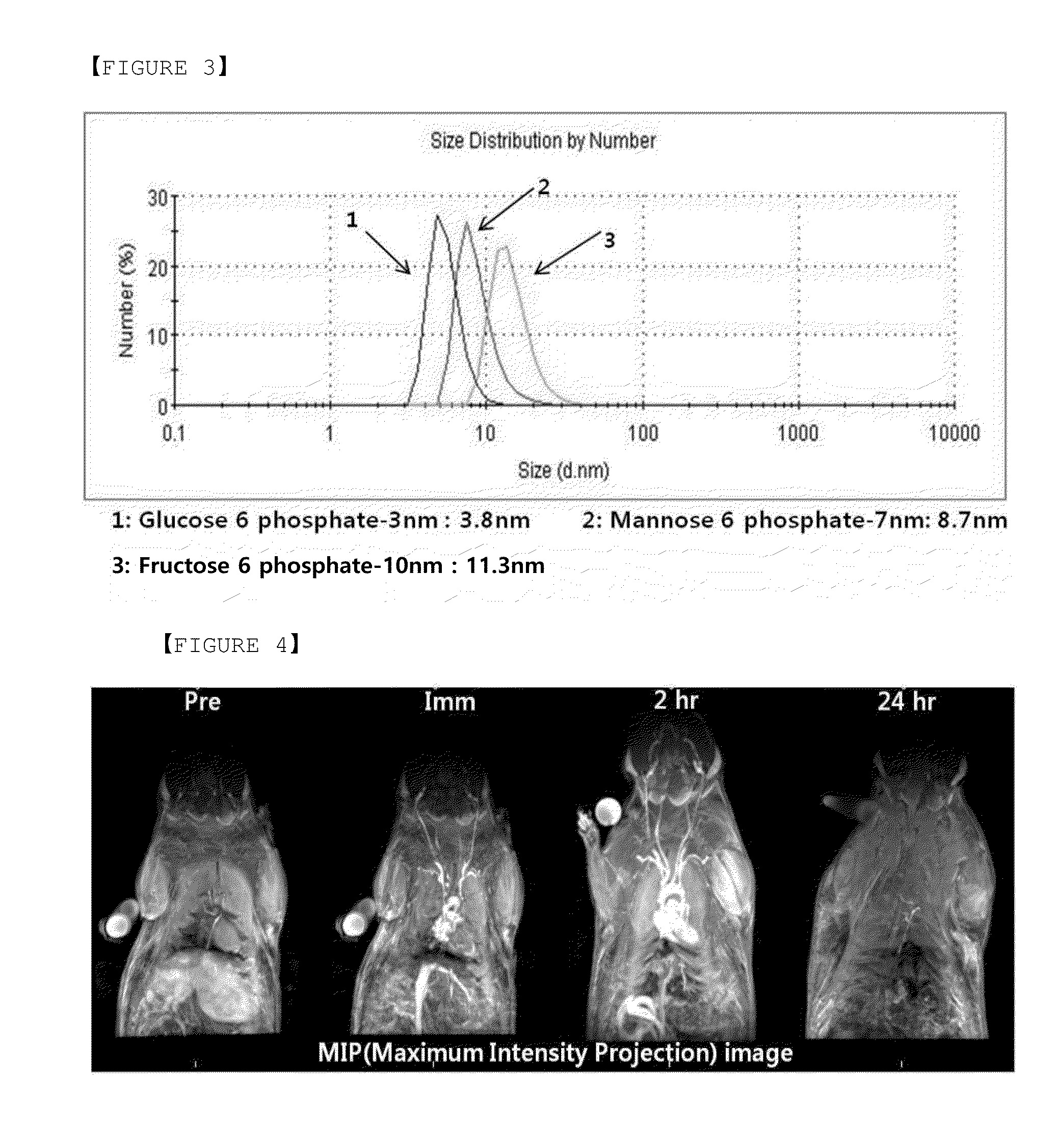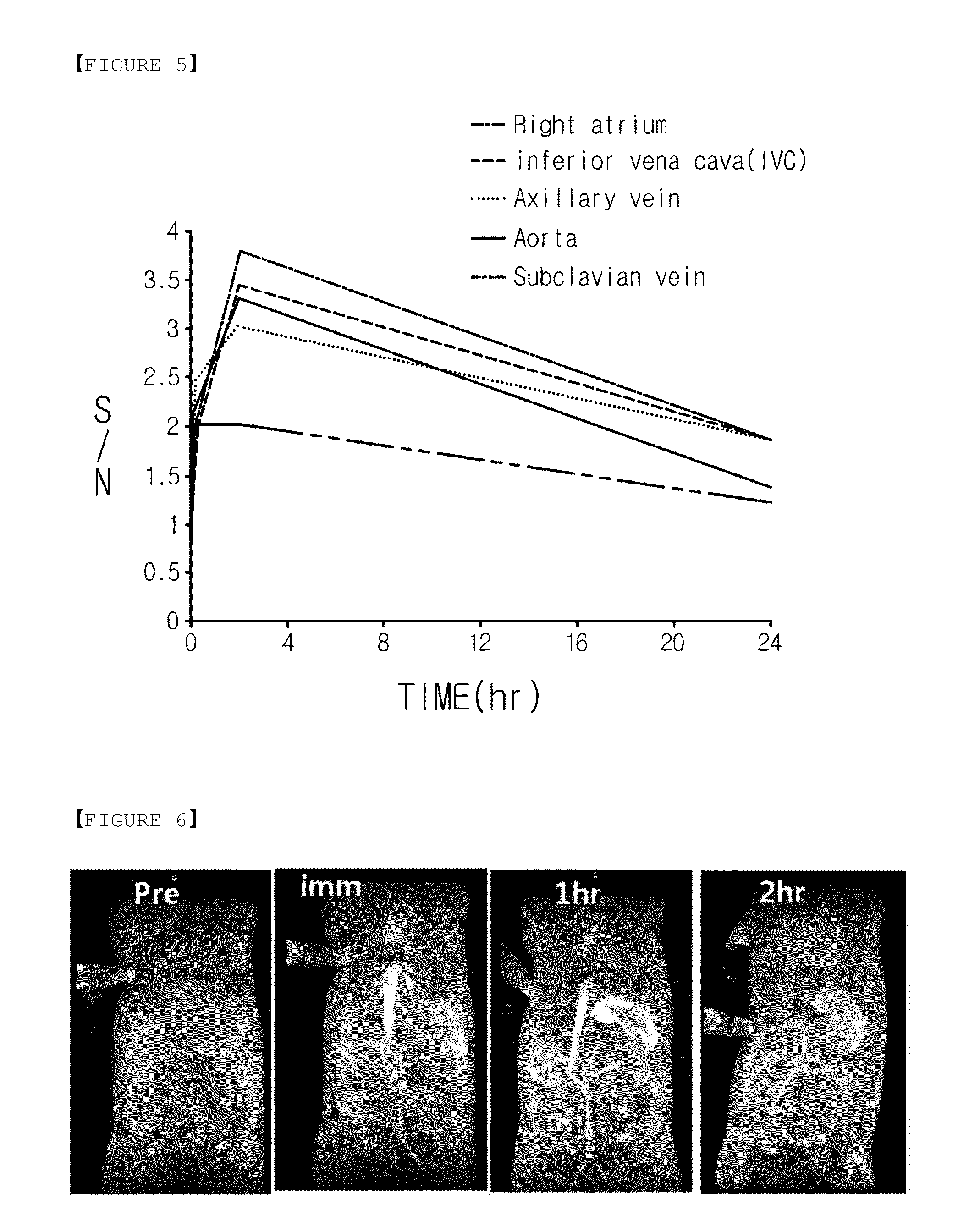Hydrophilic nanoparticles surface-modified with monosaccharide phosphate or monosaccharide phosphate derivatives, its colloidal solution and use thereof
a technology of monosaccharide phosphate and hydrophilic nanoparticles, which is applied in the field of composition, can solve the problems of difficult control of the size of nanoparticles, difficult to produce nanoparticles, and problems, and achieve excellent water dispersibility, easy production of compositions, and excellent dispersion stability
- Summary
- Abstract
- Description
- Claims
- Application Information
AI Technical Summary
Benefits of technology
Problems solved by technology
Method used
Image
Examples
example 1
Composition Including Iron Oxide Nanoparticles Hydrophilized by Glucose 6-Phosphate
[0077]Dispersion was prepared by dispersing 100 mg of iron oxide (Fe3O4) having oleic acid adhered to the surface thereof and a size of 3 nm in 8 ml of tetrahydrofuran (THF). A solution was prepared by dissolving 200 mg of glucose 6-phosphate sodium salt in 2 ml of distilled water (DIW). The dispersion and the solution were mixed. The mixture was agitated and heated at 60° C. for 4 hours, followed by settling and cooling the reaction product. The top THF layer was removed, resulting in a composition including hydrophilic iron oxide. Adding DIW to the composition, a colloidal solution was prepared. The colloidal solution was left at room temperature for six (6) months, a change in turbidity was not observed to demonstrate excellent long term stability.
[0078]Hydrodynamic diameter of the nanoparticle composition in the colloidal solution was measured using Malvern Zetasizer Nano ZS. The hydrodynamic diam...
example 2
Preparation of Composition Including Iron Oxide Nanoparticles Hydrophilized by Mannose 6-Phosphate
[0079]According to the same procedure described in Example 1, 7 nm iron oxide nanoparticles were dispersed in water using mannose 6-phosphate sodium salt. Using Malvern Zetasizer Nano ZS, a hydrodynamic diameter measured to be 8.7 nm, thus demonstrating the size substantially similar to the core size (7 nm).
example 3
Preparation of Composition Including Iron Oxide Nanoparticles Hydrophilized by Fructose 6-Phosphate
[0080]According to the same procedure described in Example 1, 10 nm iron oxide nanoparticles were dispersed in water using fructose 6-phosphate sodium salt. Using Malvern Zetasizer Nano ZS, a hydrodynamic diameter was measured to be 11.3 nm, thus demonstrating the size substantially similar to the core size (10 nm).
PUM
| Property | Measurement | Unit |
|---|---|---|
| Hydrodynamic diameter | aaaaa | aaaaa |
| Hydrodynamic diameter | aaaaa | aaaaa |
| Hydrodynamic diameter | aaaaa | aaaaa |
Abstract
Description
Claims
Application Information
 Login to View More
Login to View More - Generate Ideas
- Intellectual Property
- Life Sciences
- Materials
- Tech Scout
- Unparalleled Data Quality
- Higher Quality Content
- 60% Fewer Hallucinations
Browse by: Latest US Patents, China's latest patents, Technical Efficacy Thesaurus, Application Domain, Technology Topic, Popular Technical Reports.
© 2025 PatSnap. All rights reserved.Legal|Privacy policy|Modern Slavery Act Transparency Statement|Sitemap|About US| Contact US: help@patsnap.com



